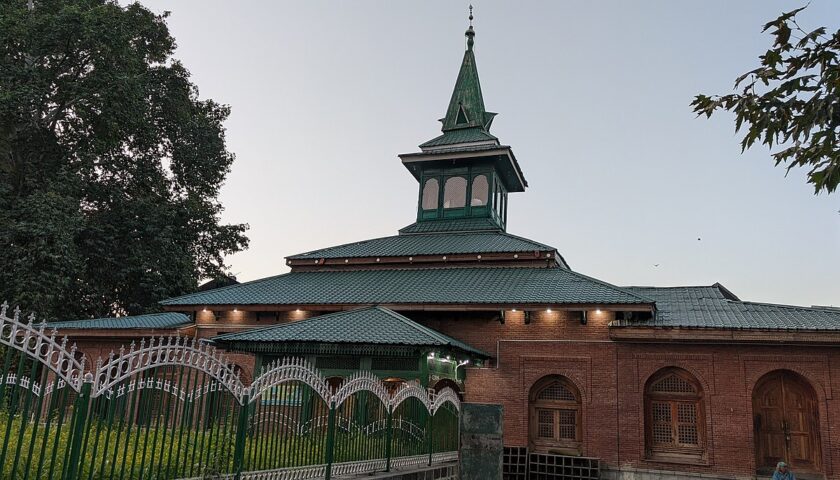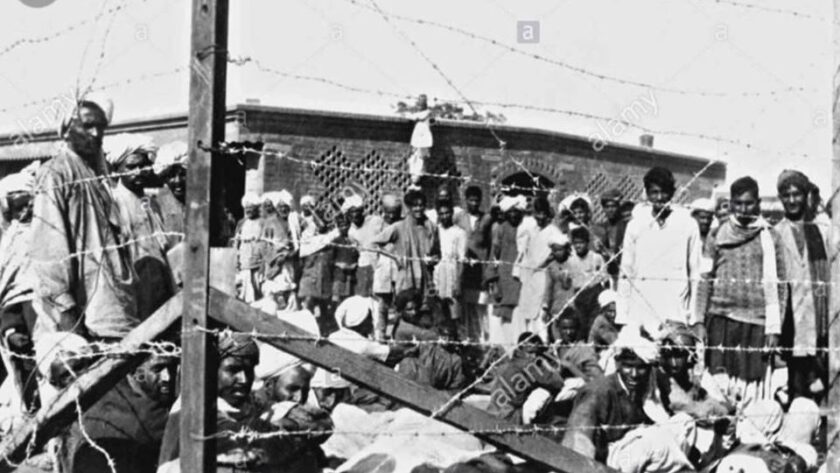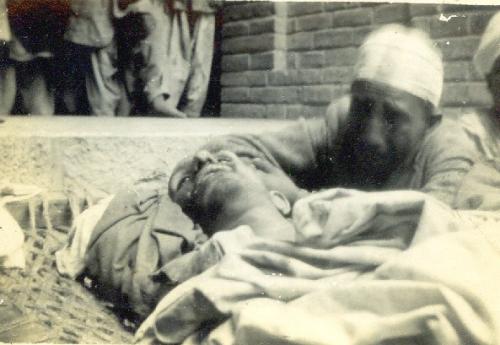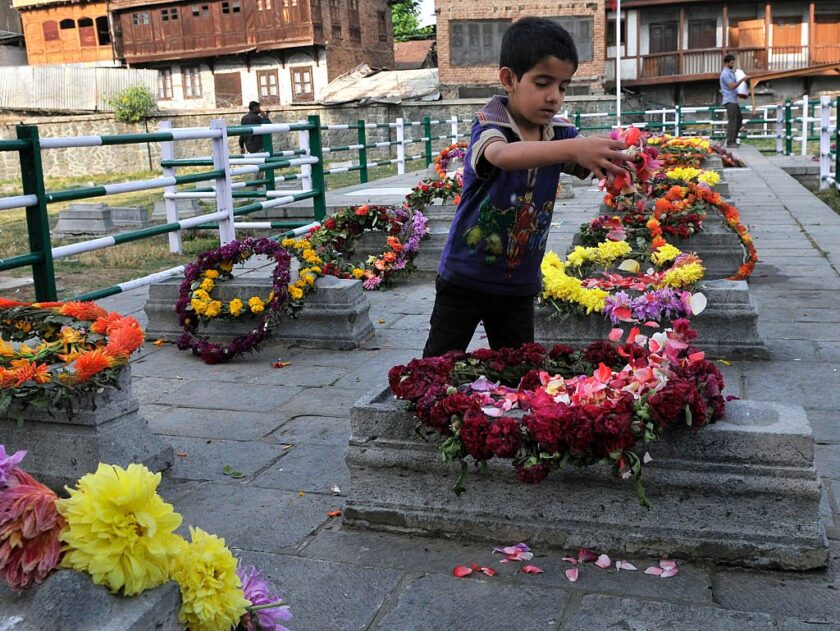13th July 1931 is a date forever etched in the minds of Kashmiris. A date which is marked with the blood of 22 brave Kashmiri people and a tyrant ruler. This date epitomizes the true spirit of Kashmir that lives on to this day. This is a piece of history whose marks are visible today and every Kashmiri must know about it.
Here is what happened:
Preceding events:
The people of Kashmir were already living under the oppressive regime of Maharja Hari Singh for years. Even before 1931, there were many important events like Shawl Baaf Agitation, Kashmir Committee formation, Mulki agitation, and other such movements of dissent.
Banning of Friday prayers:
On 29 April 1931 Friday sermon was banned at Jammu when Dogra DIG Ram Chand informed the Imam of the mosque to stop the Friday Khutbah in which he spoke out Egyptian tyrant Pharoah as mentioned in Quran. Mir Hussain Bakhsh, a young man stood up to defy the ban and accused the regime of interfering in religious matters. A protest was held in this regard at the main masjid in the city. This was the beginning of a series of protests against the Dogra rule.
Discretion of Quran:
On June 4, in the central jail police constable, Fazal Dad Khan’s copy of Panjsurah (5 chapters of Quran) was thrown away by Sub Inspector Labhu Ram while reprimanding him for being late. Fazal reached out to the Young Men’s Muslim Association. The association called upon people to stage protests against this heinous act. Several such incidents also took place in other parts of Kashmir further fueling the fire. In one incident in Srinagar on 20th June, leaves of the Quran were found in a public latrine.
Land dispute:
As a landowner converted to Islam in Udhampur and his property was taken away and given to his Hindu brother. He filed a case but it was dismissed on the basis that he needed to re-enter the Hindu faith to be entitled to any property. This was done in accordance with a law of the Dogra rule which was passed on 31 December 1882.
Maharaja tries to subdue the movement:
Hari Singh invited a deputation of Muslims from both Jammu and Kashmir to hold talks about the recent developments. Mirwaiz Moulvi Yousuf Shah was chosen as the representative of Muslims from Kashmir. It was Mirwaiz who introduced Sheikh Abdullah to Kashmir during a protest at Jamia Masjid on June 8, 1931.
The freedom movement begins:

Kashmiri representatives gathered at Khanqah for a meeting on June 21, 1931. In the words of Sheikh Abdullah, Aatish-i-Chinar, “This gathering should be considered the formal inauguration of freedom movement of Kashmir.” It was at this gathering that a body of Muslim representatives was formed. City magistrate Pandit Sat Lal attended the meeting. CID officers were also present to be informed about the events.
Abdul Qadeer Khan:
According to many sources, Abdul Qadeer Khan was an employee of an English army officer, posted at Peshawar. His origins remain clouded, with some attributing him to Swat, others to Rawalpindi but his mark on Kashmir’s history remains to this day. He attended the meeting at Khanqah and got up to the stage delivering a stirring speech. Rashid Taseer in his “Tarikh-i-Hurriyat”, recorded his speech as;
“Muslim brothers: the time has now come when we should not meet force by great force to put an end to the tyrannies and brutalities to which you are subjected, nor will they solve the issue of disrespect to Holy Quran to your satisfaction. You must rely up on your own strength and wage a relentless war against oppression”; pointing his finger towards the palace he shouted, : “raze it to the ground”. He said, “We have no machine guns. But we have plenty of stones and brickbats.”
His speech was recorded by the authorities and a few days later, on 25 June, he was arrested. He was charged with “sedition” and “want only giving provocation with intent to cause riot” under the Ranbir Penal Code. His trial started on 4 July in the Court of the Sessions Judge, Srinagar.
13th July, 1931: A day of deathly defiance.
The trial of Abdul Qadeer was held in Srinagar jail premises. A large gathering of Muslims flocked to the jail, an estimated number of 5000 strong, demanding his release. They were denied entry into the compound. However, about 200 forced their way in and remained inside peacefully.

The Deputy Inspector of Police arrived at the site with two Sub-Inspectors, five head constables, and 44 policemen. This was just reinforcement as the Jail forces were already present with 119 policemen armed with bamboo sticks and canes while 19 policemen had rifles.
At around 1 pm when the judge arrived people had gathered for Zuhr prayers. he was met with slogans of ‘Allah o Akbar, Islam Zindabad, Abdul Qadeer, ‘Our brother from Rawalpindi’, ‘we will go to the jail, imprison us instead’. Soon the police charged them with batons and the people fought with stone, bats, and hand-to-hand fighting.
Ghulam Mohammad Halwai a former policeman bounced upon a policeman and took his gun. The policemen arrested five people which further incensed the people. Among all this, a man Khwaja Abdul Khaliq Shora stood up and recited Azaan loudly. The Governor ordered his troops to open fire and Shora was shot dead. But in an act of defiance and will another man replaced him and continued the call to prayers. He was shot dead too. In this way, one after another 17 bravehearts were shot in cold blood by the Dogra forces. In the indiscriminate firing, hundreds were injured out of which around 50 suffered serious injuries and 5 people passed away later due to injuries. 22 people laid down their lives to complete the Azaan and displayed a courage that is now legendary.

GS Raghavan described 13 July 1931, in his book The Warning From Kashmir:
“The hearing in jail fell on 13th July. On that day, a mob stormed the jail and demanded admittance […] gates had been forced and the inner gates were attacked. At the suggestion of the Judge, two Muslim lawyers, representing the accused, harangued the visitors to go out of the Jail precincts. Finding that there was no possibility of ingress, the crowd went out and started stoning officials and set fire to the police lines. The police force was then called in. All efforts to pacify the unruly mob proved futile.[…] The crowd stoned the policemen and the prisoners were liberated. […] the District Magistrate directed fire to be opened. The crowd fell off but later it re-assembled and resumed stoning. It had to be dispersed with a Lathi charge. […] the cavalry had to pursue it and disperse it again. […] loot over an extensive area followed […] pandemonium prevailed.”
The crowds buried the bodies in the graveyard of the Shrine of Khwaja Bahawuddin Naqshbandi (Ziyarat Naqshband Sahab) in Srinagar, which has since come to be known as Mazar-e-Shuhada or the Martyrs’ Graveyard.
The last words:
In a heart-wrenching narration, the last martyr before dying reportedly told Sheikh Abdullah ‘I have done my duty and now you proceed ahead”.
Aftermath:
On 14th August 1931 a protest call was given by the All India Kashmir Committee. Their members entered Kashmir voluntarily and one person Ellahi Bakshi was killed by Dogra police at Kashmir border. He was the Muslim martyr from India to sacrifice his life for Kashmir.
The Reading Room Party, in protest of the killings, announced a state-wide shutdown. At a public meeting at the Martyrs’ Graveyard, Abdullah announced that 13 July, henceforth, would be Martyr’s Day. Amidst the following unrest, arrests included those of Sheikh Abdullah and Chaudary Ghulam Abbas.

Names of the 13th July,1931 martyrs:
- Khaliq Shora.
- Akbar Dar.
- Ghulam Ahmad Rather.
- Usman Misgar
- Ghulam Ahmad Bhat.
- Ghulam M Halwai.
- Ghulam Nabi Kalwal.
- Ghulam Ahmad Naqash.
- Ghulam Rasool Durra.
- Ameer-ud-Din Makayi.
- Subhan Makayi.
- Ghulam Qadir Khan.
- Ramzan Chola.
- Ghulam Mohammad Sofi.
- Naseer-ud-Din.
- Ameer-ud-Din Jandgaru.
- Mohammad Subhan Khan.
- Mohammad Sultan Khan.
- Abdul Salam.
- Ghulam Mohammad Teli.
- Fakeer Ali.
- Ghulam Ahmad Dar.
- Mughli.
- Abdullah Ahanger.
